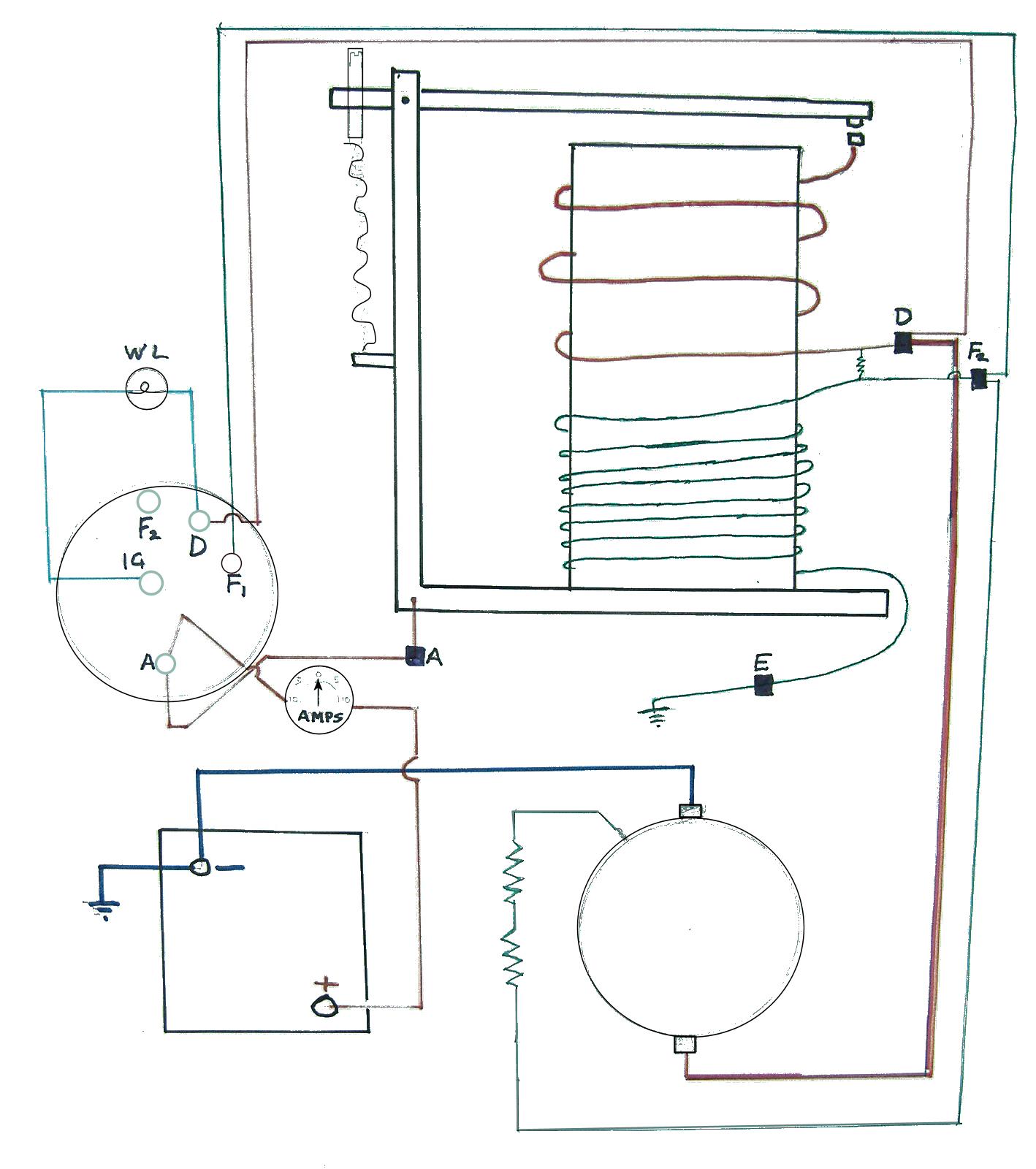
THE AUSTIN SEVEN CUT-OUT EXPLAINED
1. When the ignition is switched on, the warning light ignites by battery voltage passing through the (IG) ignition switch and passing though the switch (D) terminal to D terminal on the cut-out and through the stationary dynamo to earth.
2. When the engine is started and the dynamo starts to turn, a small voltage is produced which passes through D and F2 terminals on the cut-out and reaches earth through the field windings.
3. The field windings, energised by the dynamo, produce an increasing voltage which goes to the F2 terminal of the cut-out and goes to earth through the fine winding wound around the iron core of the cut-out. This produces an increasing magnetism in the iron core that attracts the spring-loaded arm which carries a moving contact which is pulled down, contacting a fixed contact.
4. Charging current then flows though the closed contacts from the dynamo to D terminal on the cut-out through the thick wire winding around the iron core to the (A) terminal and from the (A) terminal to the (A) terminal on the ignition switch. The voltage at the A, IG and D terminals should all be a similar 6/7 volts. The voltage both sides of the IG warning light will be the same so no current will flow and the light will be out.
5. When the engine speed reduces to idle, the dynamo will cease to produce sufficient voltage to charge the battery and the battery will start to discharge through the dynamo, reversing the current flowing through the heavy winding on the cut-out which will tend to try to reverse the polarity of the iron core against the reducing voltage of the fine winding. With its reduced magetism, the spring will pull the contacts apart stopping the battery discharging through the dynamo. The warning light will glow dimly as the (IG) terminal on the ignition switch will be at battery voltage but the voltage at the (D) terminal will be several volts lower.
Fault finding
1. If the cut-out fails to close and the dynamo is
working satisfactory it is usually because there is a poor earth connection on
the cut-out. This will be indicated by the warning light going out as the engine
revs are increased but then coming back on as the revs are increased further.
2. If the points close but the charge rate is low and the warning light glows, it could indicate that the points are dirty or damaged, usually caused by the points being closed manually while the engine is not running, causing the battery to discharge though the dynamo at high amperage, heating up the points.
Roger Ballard DA7C
